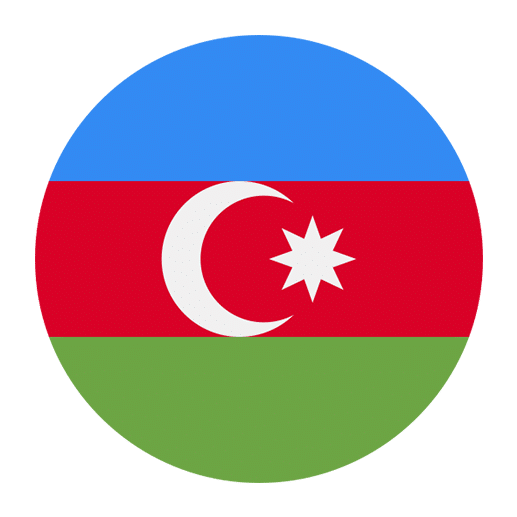Language learners often encounter numerous challenges when acquiring a new language, ranging from mastering grammar rules to expanding vocabulary. One of the aspects that can either simplify or complicate the learning process is the presence or absence of gender distinctions in nouns. For those venturing into the world of Azerbaijani, a Turkic language spoken primarily in Azerbaijan and northwestern Iran, the question of gender distinctions in nouns may arise. This article aims to explore the myths and realities surrounding this topic and offer insights to help learners navigate Azerbaijani with greater ease.
Understanding Gender in Language
Before delving into the specifics of Azerbaijani, it’s essential to understand what gender in language means. In many languages, nouns are classified into categories based on gender. For instance, in languages like French, Spanish, and German, nouns are assigned a gender: masculine, feminine, or sometimes neuter. This classification impacts various grammatical aspects, such as articles, adjectives, and sometimes verbs.
The Myth: Azerbaijani Has Gendered Nouns
A common misconception among learners is that all languages have gender distinctions in nouns. This belief may stem from the familiarity with widely-studied gendered languages such as French or Spanish. However, the reality is quite different, and Azerbaijani offers a refreshing departure from this norm.
No Gender Distinctions in Azerbaijani Nouns
One of the most striking features of Azerbaijani is the absence of gender distinctions in nouns. Unlike languages that require learners to memorize the gender of each noun, Azerbaijani nouns are gender-neutral. This means that the same word is used regardless of whether it refers to a male or female entity.
For example:
– “Ata” means father.
– “Ana” means mother.
– “Oğlan” means boy.
– “Qız” means girl.
In each case, there is no additional grammatical layer indicating the gender of the noun. This lack of gender distinction simplifies the learning process, as learners do not need to memorize different forms of articles or adjectives based on the gender of the noun.
The Reality: Gender in Personal Pronouns
While Azerbaijani does not have gender distinctions in nouns, it does have gender-specific personal pronouns. However, even this aspect is relatively straightforward compared to gendered languages. Azerbaijani uses three primary third-person singular pronouns: “o,” “bu,” and “o” (again, but used differently in context).
– “O” is a general third-person pronoun that can mean he, she, or it, depending on the context.
– “Bu” and “o” are demonstrative pronouns meaning “this” and “that,” respectively.
The context in which “o” is used typically clarifies whether it refers to a male, female, or neutral entity. For instance:
– “O gəldi” can mean “He came,” “She came,” or “It came,” depending on the preceding conversation or situation.
This usage highlights that while Azerbaijani does account for gender in personal pronouns, it does so in a way that relies heavily on context rather than grammatical rules. This can be both an advantage and a challenge for learners, as it reduces the need for memorization but requires a keen understanding of context.
Adjectives and Gender
In Azerbaijani, adjectives do not change form based on the gender of the noun they describe. This is another aspect where Azerbaijani differs from many Indo-European languages. Adjectives remain consistent regardless of whether they describe a male, female, or neutral noun.
For example:
– “Gözəl oğlan” means “handsome boy.”
– “Gözəl qız” means “beautiful girl.”
In both cases, “gözəl” (beautiful/handsome) remains unchanged, providing a consistent and straightforward approach to adjective usage.
Pluralization and Case Endings
While gender does not influence noun forms, Azerbaijani does employ pluralization and case endings, which are critical for proper grammar and sentence structure. Pluralization in Azerbaijani is typically achieved by adding the suffix “-lar” or “-lər” to the noun, depending on vowel harmony.
For example:
– “Kitab” (book) becomes “kitablar” (books).
– “Ev” (house) becomes “evlər” (houses).
Case endings in Azerbaijani indicate the grammatical function of a noun in a sentence, such as the subject, direct object, or possessive form. These endings are added to the noun and vary based on vowel harmony and consonant changes.
For example:
– Nominative: “Kitab” (book)
– Accusative: “Kitabı” (the book)
– Dative: “Kitaba” (to the book)
– Genitive: “Kitabın” (of the book)
– Locative: “Kitabda” (in the book)
– Ablative: “Kitabdan” (from the book)
These grammatical elements are essential for constructing meaningful and grammatically correct sentences in Azerbaijani.
Common Misconceptions
Given the absence of gender distinctions in Azerbaijani nouns, learners might assume that the language lacks complexity. However, this is a misconception. Azerbaijani has its own set of grammatical rules and nuances that require attention and practice. Here are some common misconceptions to be aware of:
Misconception 1: Azerbaijani is Easy Because It Lacks Gendered Nouns
While the absence of gendered nouns simplifies certain aspects of learning, Azerbaijani presents challenges in other areas, such as case endings, verb conjugations, and vowel harmony. These elements require dedicated study and practice.
Misconception 2: Context Always Clarifies Pronoun Gender
Although context often clarifies the gender of pronouns, there can be situations where ambiguity persists. In such cases, additional context or clarification may be necessary. Learners should be prepared to ask for or provide extra information to ensure clear communication.
Misconception 3: Gender Distinctions Are Irrelevant in Azerbaijani
Even though Azerbaijani nouns are gender-neutral, understanding cultural and social contexts where gender distinctions are relevant is important. For example, knowing how to address individuals respectfully based on their gender or understanding gender roles in Azerbaijani society can enhance communication and cultural competence.
Practical Tips for Learners
To effectively navigate the nuances of Azerbaijani, learners can benefit from the following practical tips:
1. Focus on Context
Given the reliance on context for pronoun gender, learners should practice paying close attention to the surrounding conversation and situational cues. Contextual awareness will enhance comprehension and communication.
2. Practice Case Endings
Case endings are crucial for grammatical accuracy. Regular practice with different cases and their applications will help learners internalize these rules and use them correctly in speech and writing.
3. Engage with Native Speakers
Interacting with native Azerbaijani speakers provides valuable exposure to the language in its natural context. Conversations with native speakers offer opportunities to observe how gender-neutral nouns and context-based pronouns are used in real-life communication.
4. Utilize Language Resources
Language learning apps, textbooks, and online resources tailored to Azerbaijani can provide structured lessons and exercises. These resources often include explanations and examples that aid in understanding and mastering grammatical concepts.
5. Embrace Cultural Learning
Understanding the cultural context in which Azerbaijani is spoken enhances language proficiency. Learning about Azerbaijani customs, traditions, and social norms can provide valuable insights into how language is used and appreciated in different settings.
Conclusion
The absence of gender distinctions in Azerbaijani nouns offers a unique and simplified aspect of language learning for English speakers. While this feature reduces the burden of memorizing gender-specific forms, learners must still navigate other grammatical complexities, such as case endings and vowel harmony. By focusing on context, practicing regularly, engaging with native speakers, utilizing language resources, and embracing cultural learning, learners can effectively master Azerbaijani and enjoy the richness of this beautiful language. Understanding the myths and realities of gender distinctions in Azerbaijani nouns will empower learners to approach their studies with confidence and clarity.

